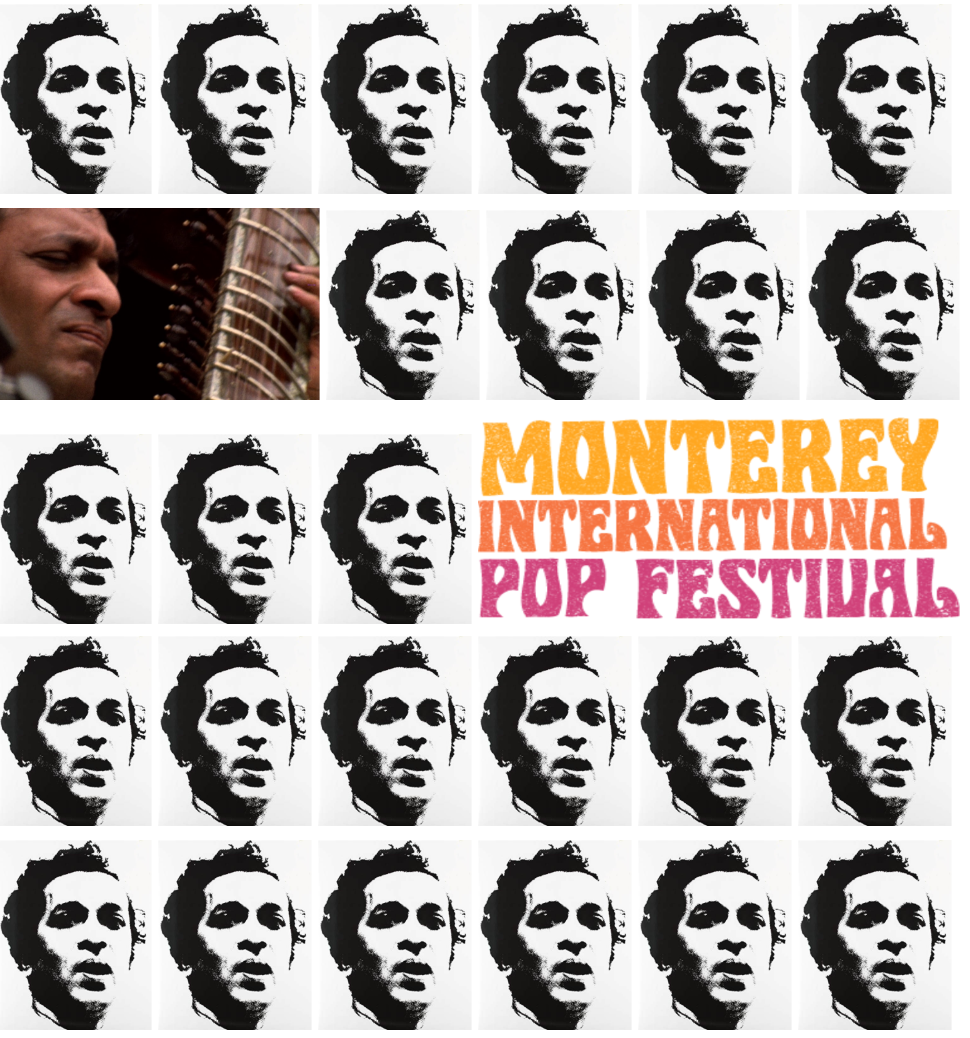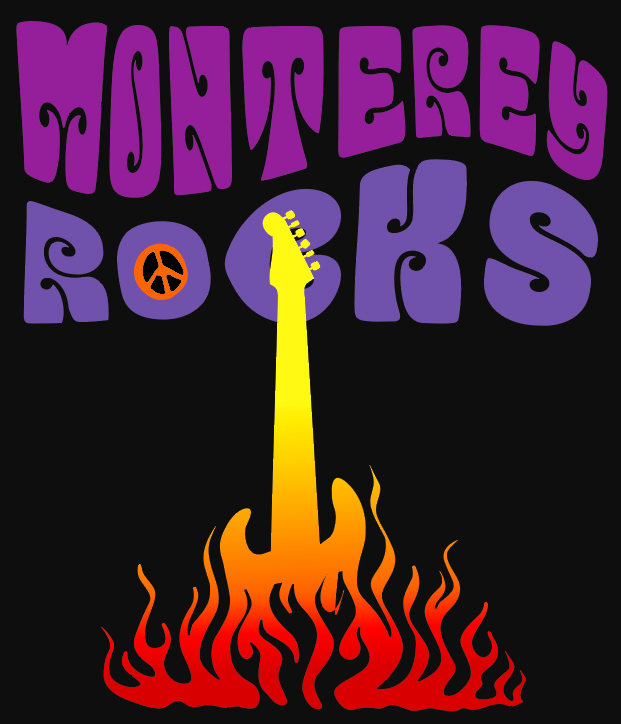Ravi Shankar at the Monterey International Pop Festival | Photo collage by Joe Livernois
By Joe Livernois
The final day at the Monterey Pop Festival featured electrifying performances. Janis Joplin was called back for another day to recreate magic, The Who bashed their equipment and Jim Hendrix started a stage fire without a permit. It’s safe to say that no single day of music created so much public excitement, before or since. The wall of sound and the chaos was extraordinary, but none of that was more singularly revolutionary than Ravi Shankar’s sitar.
On the third day of the festival, Ravi Shankar was given the stage for the entire Sunday afternoon. It really came out of nowhere. Rumor of Shankar had been circulating for a bit. George Harrison was a student and a couple of rock stars were starting to dabble in Eastern mysticism. Shankar had been playing in the U.S for years, notably at Carnegie Hall, and at Royce Hall in UCLA in 1961. A recording of the Royce Hall concert was released in cooperation with the school’s Institute of Ethnomusicology. Shankar moved to California earlier in 1967 because he was in such demand.
But his appearance on the Monterey County Fairgrounds stage in 1967 — and the recordings that followed — would be Shankar’s real introduction to a larger audience. It was so different and so mesmerizing that it opened the minds of American youth to a culture completely separate from their own. And that’s saying something. At 48, Shankar was a relative geezer in that place at that time, and his instrument resembled some loon attempt to make a centipede musical. In Monterey, he lets loose with a collection of classical Hindustani music of his own
Enlarge

David Fricke, a music critic for Rolling Stone, called Shankar’s performance “one of the most explosive moments in D.A. Pennebaker’s film, ‘Monterey Pop.’” Pennebaker caught Shankar’s “elegant and blazing Sunday-afternoon set and the sudden, volcanic applause at the end, by a truly stunned audience.”
Author Peter Lavezzoli referred to the audience response as “ecstatic,” adding that performance itself was Shankar’s “Monterey coup d’etat.”
It was apparently an other-worldly experience for Shankar himself. On stage with his elaborate instrument, Shankar was joined by his tabla player, Alla Rakha, and his partner at the time, Kamala Chakravarty, on tambura. Critics say it was his greatest performance ever, and Shankar himself agreed.
During an interview with rock music writer Harvey Kubernik many years later, Shankar said he showed up to Monterey Pop a day earlier than his scheduled appearance and took it all in.
“I arrive in Monterey and see butterflies and colors and flowers with peace and love,” he said. ”It was fantastic. I was impressed, but everyone was stoned. But that was all right and I was meeting all these beautiful people.
“One night, I really heard Otis Redding. He was fantastic. One of the best, I remember. I really like The Mamas and The Papas. Lyrical, harmony and good choruses and harpsichord. Then, you know, came the hard rock. The Jefferson Airplane. The Grateful Dead. To me it was difficult in a very loud, hurtful in-my-ear way. And Janis Joplin. I had heard of her, but there was something so gutsy about her. Like some of those fantastic jazz ladies like Billie Holliday. That sort of feeling, so I was very impressed by her.”
He took the stage the next afternoon, soon after a morning rain drenched the Monterey Peninsula. “It was like magic,” he told Kubernik. Hendrix was watching. So was Jerry Garcia. With everyone else in the Pattee Arena that afternoon, they were transfixecd. “I was grateful to God that I was sitting in the atmosphere without anyone disturbing me,” Shankar said. ”After the set, it was crazy. I have never felt such a commotion of this sort. I was so pure.”
After his set, he stuck around Sunday night and watched the carnage.
“I had heard so much about Jimi Hendrix,” he said. “Everyone was talking about him. I was amazed … the dexterity in his guitar playing. But after two, three items, he started his antics. Making love to the guitar, I felt that was quite enough. Then, all of a sudden he puts petrol on his guitar and burns it. That was the leaving point. Sacrilegious. I knew it was a gimmick. Then, The Who followed, started kicking the drums and breaking their instruments. I was very hurt.”
In 2011, KQED listed the five ways Shankar changed American culture. Check out the Shankar section of D.A. Pennebaker’s film about Monterey Pop and you’ll see “white Americans greet him with a traditional namaste by pressing their hands together and directing them towards the stage … Jimi Hendrix moves his head and body from side to side. Indian music had arrived for good.”
Have something to say about this story? Send us a letter or leave a comment below.
